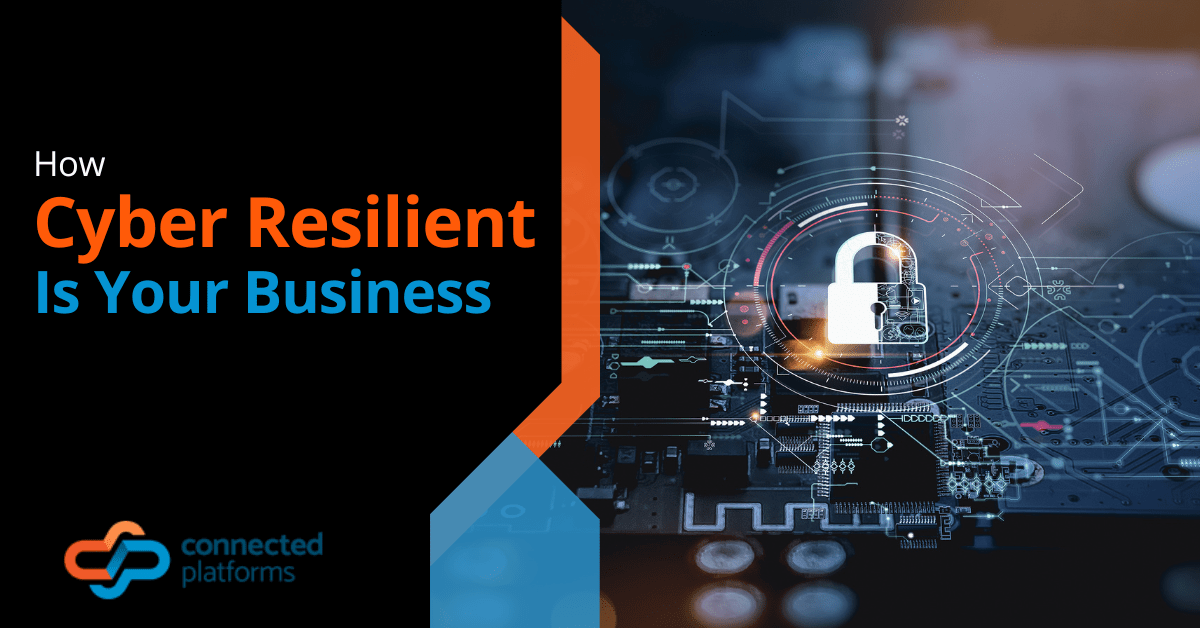The digital age has ushered in a myriad of opportunities for businesses to increase their reach and further their success, but these opportunities come with a significant risk: cyberattacks. Cybercriminals are constantly evolving their strategies, so it is vital for small businesses to stay one step ahead with a comprehensive cyber resilience plan.
It’s no wonder that cyber resilience has become a top priority for many organisations. After all, a cyberattack can significantly damage an organisation’s reputation and if not handled properly, can even lead to financial ruin. In this blog post, we’ll discuss what cyber resilience is, how to assess and enhance your organisation’s cyber resilience, and when to reach out for professional help.
It is more important than ever for businesses to prioritise cyber resilience in order to protect themselves against the ever-evolving cyber threats.
What Is Cyber Resilience?
While it can slightly vary depending on the organisation, cyber resilience is generally defined as your ability to prevent, detect, and respond to cyber-related threats. It encompasses the processes and practices that reduce an organisation’s susceptibility to cyber threats and its ability to recover should a security incident occur.
Key components of cyber resilience include: – Security awareness and training – Infrastructure and technology – Policies and procedures – Incident response planning – Data protection.
When it comes to cyber resilience, it is important to think of it as an ongoing process. It is not something that can be implemented once and forgotten about; rather, it is something that must be continually updated and re-evaluated in order to remain effective.
What Does It Look Like In Practice?
In practice it looks like a combination of technical solutions as well as an organisation-wide culture that prioritises security. This includes things like:
- Technology: End-to-end encryption, two-factor authentication, security patches, and backup and recovery plans all working together to keep networks secure.
- Employee Education: All employees, from the CEO to the IT department, need to understand their roles in the organisation’s cyber security posture.
- Security Procedures: Organisations should have specific protocols in place to respond to cyber incidents and other potential threats.
- Data Protection: All sensitive information should be encrypted and stored properly.
There are many more elements to successful cyber resiliency, but these are some of the essential building blocks.
Assessing Your Organisation’s Cyber Resilience
In order to ensure that your organisation is cyber resilient, it is important to assess your current procedures and security measures. Here are some steps that you can take:
- Assess your IT infrastructure to ensure that your hardware and software are up-to-date and secure.
- Consider the organisational policies that you have in place and look for potential weaknesses.
- Research your existing security measures to ensure that they are up-to-date and effective.
- Review employee training and education procedures to ensure that employees are aware of their roles and responsibilities.
- Analyse your response and recovery plans to make sure that they are comprehensive.
- Monitor your systems for emerging threats to ensure that you are prepared to handle them.
Once you’ve properly assessed your organisation’s cyber resilience, you can decide what your next steps should be.
When To Reach Out For Professional Help
There are certain situations where it is best to seek professional help. This includes when you don’t have the in-house security team to address potential threats or you’re simply unsure of your cybersecurity posture.
If you don’t have the tools or experience to regularly monitor threats it is wise to seek professional assistance. They can help you understand how to respond to a suspected breach or help to establish a robust cyber risk management plan.
A Crucial Aspect Of Modern Business
Cyber resilience is a crucial aspect of modern business operations and one that should not be overlooked or taken lightly. It is important to assess your organisation’s current cyber resilience and to take proactive steps to improve it.
Businesses should continually update and assess their security measures to ensure that they are protected. Investing in the right cyber resilience strategy can make all the difference for your business.
Looking To Get Quality Managed IT Services in Brisbane? Let Connected Platforms Help!
If you want to make sure that your business is cyber resilient, reach out to us today. We can provide you with a comprehensive assessment of your organisation’s cyber resilience and develop a strategy to help you stay one step ahead of hackers in Brisbane, Australia.
Contact us today for a free security consultation or to find out more about other IT solutions we can help you with. Call 1300 866 096 or book a coffee meeting online.




